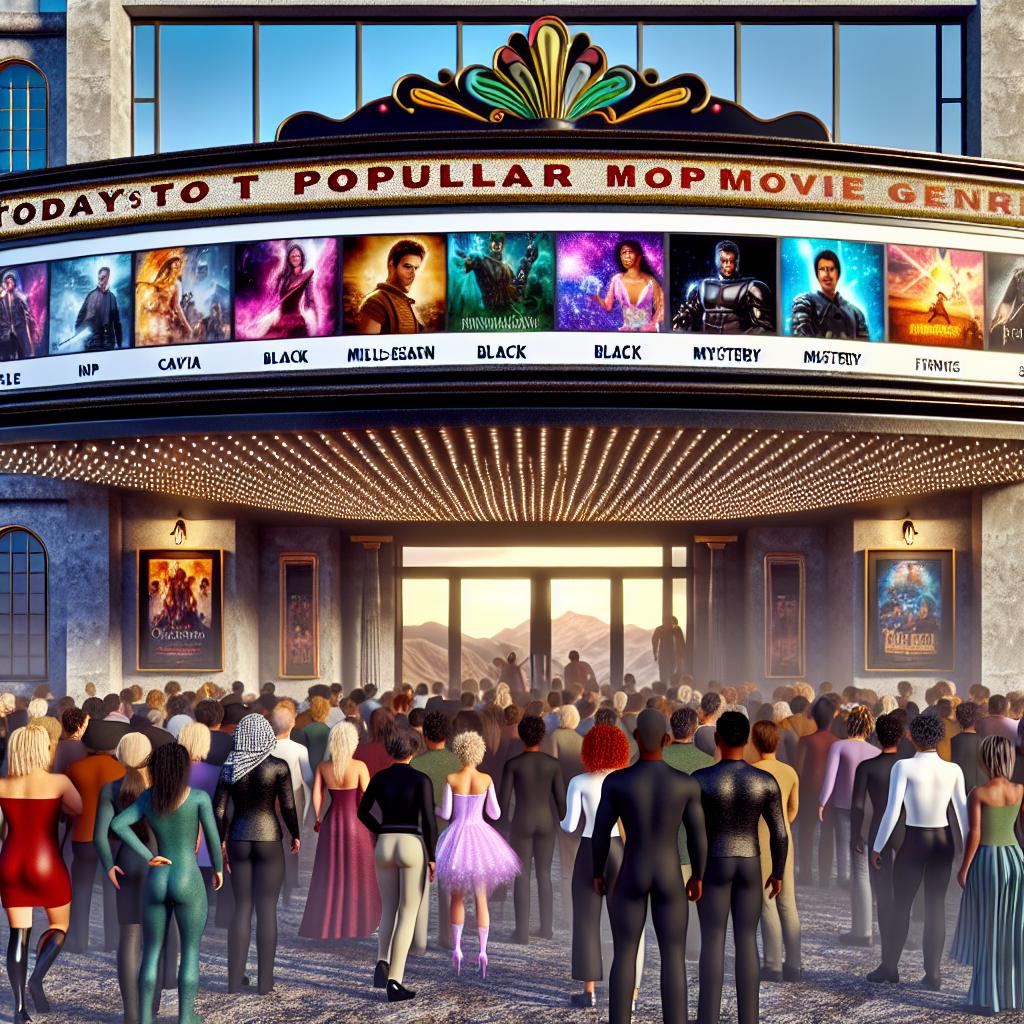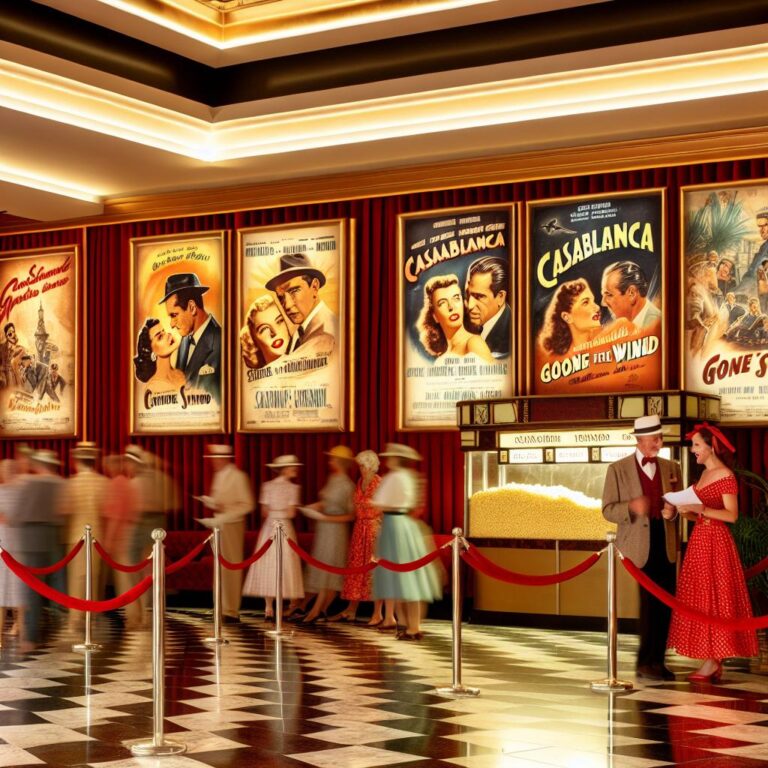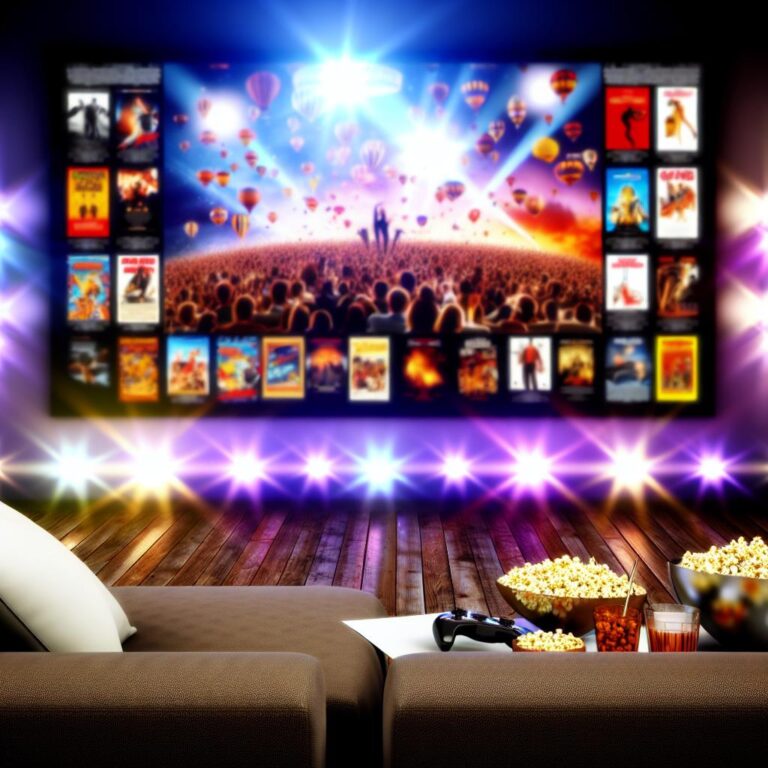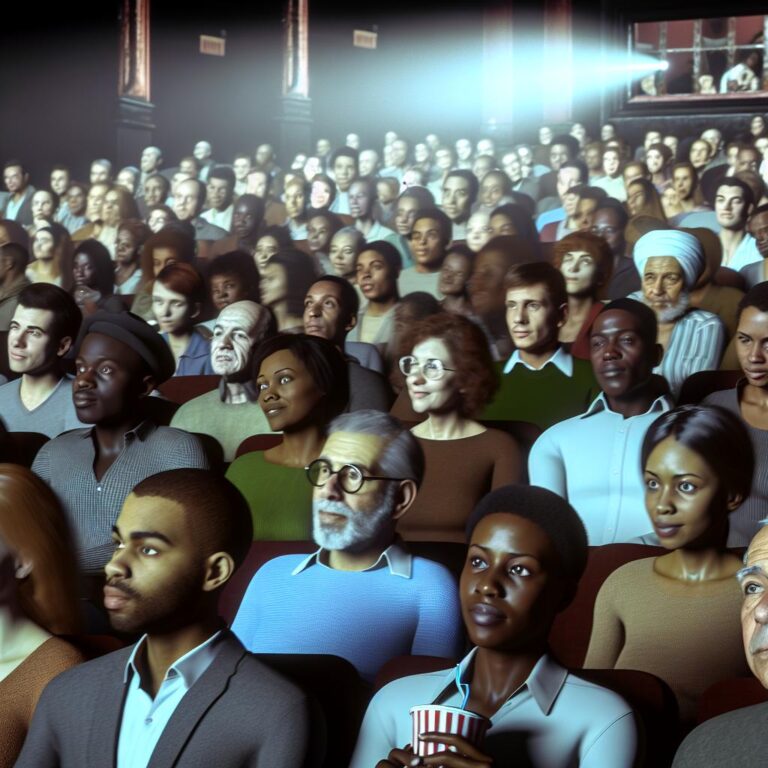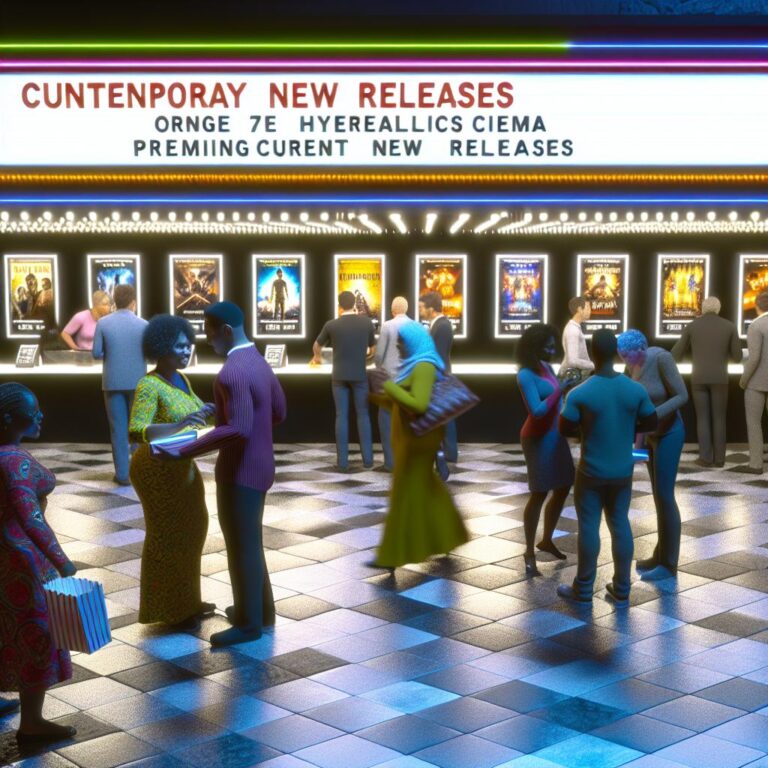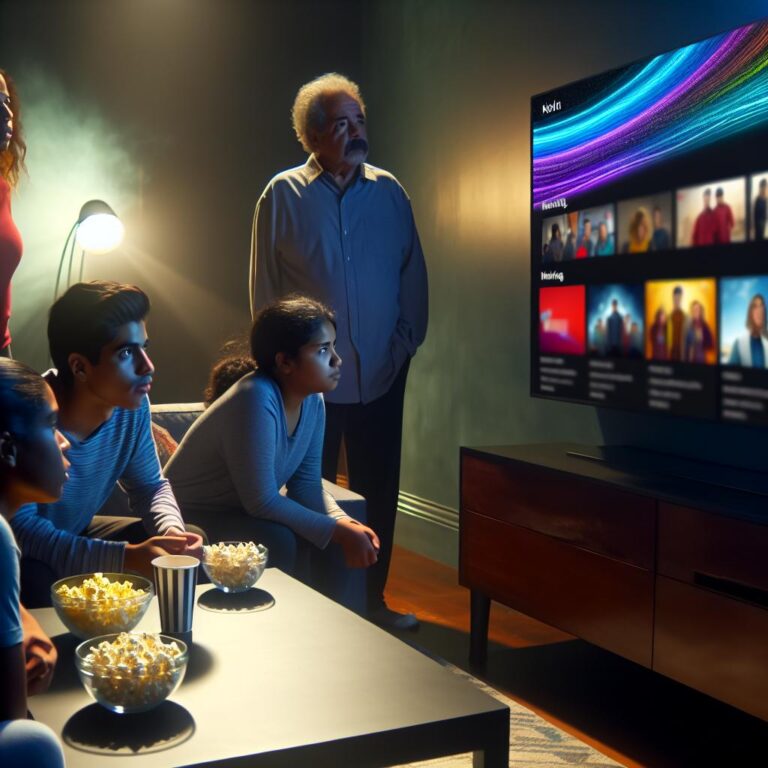Popular Movie Genres: What Are Today’s Top Picks?
- Popular cinema categories today: Action, comedy, horror, science fiction, drama.
- Action dominates box office revenue; suits various eras.
- Comedy thrives on enduring humor.
- Horror captivates through fear and suspense.
- Science fiction engages through imagery and philosophy.
- Drama secures emotional audience connections.
- 2023 global trends: Action and comedy thrive; horror, science fiction, and drama remain strong.
- U.S. popular genres: Action, comedy, horror, science fiction, and drama, with rising trends in superhero movies, documentaries, and animation.
- Romantic films influence audience perceptions, economy, and are often integrated into other genres.
- Emerging global trends: Eco-thrillers, interactive storytelling, socially conscious sci-fi, satirical comedies.
- Cultural differences shape global genre popularity.
- Cross-genre innovations (e.g., horror-comedy, romance-sci-fi) are defining international cinema.
Have you ever wondered why some movie genres capture our hearts while others fade away? In "Popular Movie Genres: What Are Today's Top Picks?" I dive into today's cinema pulse. You'll discover what makes certain genres shine and others falter at the box office. Plus, I connect these trends to shifts in history and society. So grab your popcorn—this journey through film's favorite genres is one you won't want to miss!
What are the most popular cinema categories today?
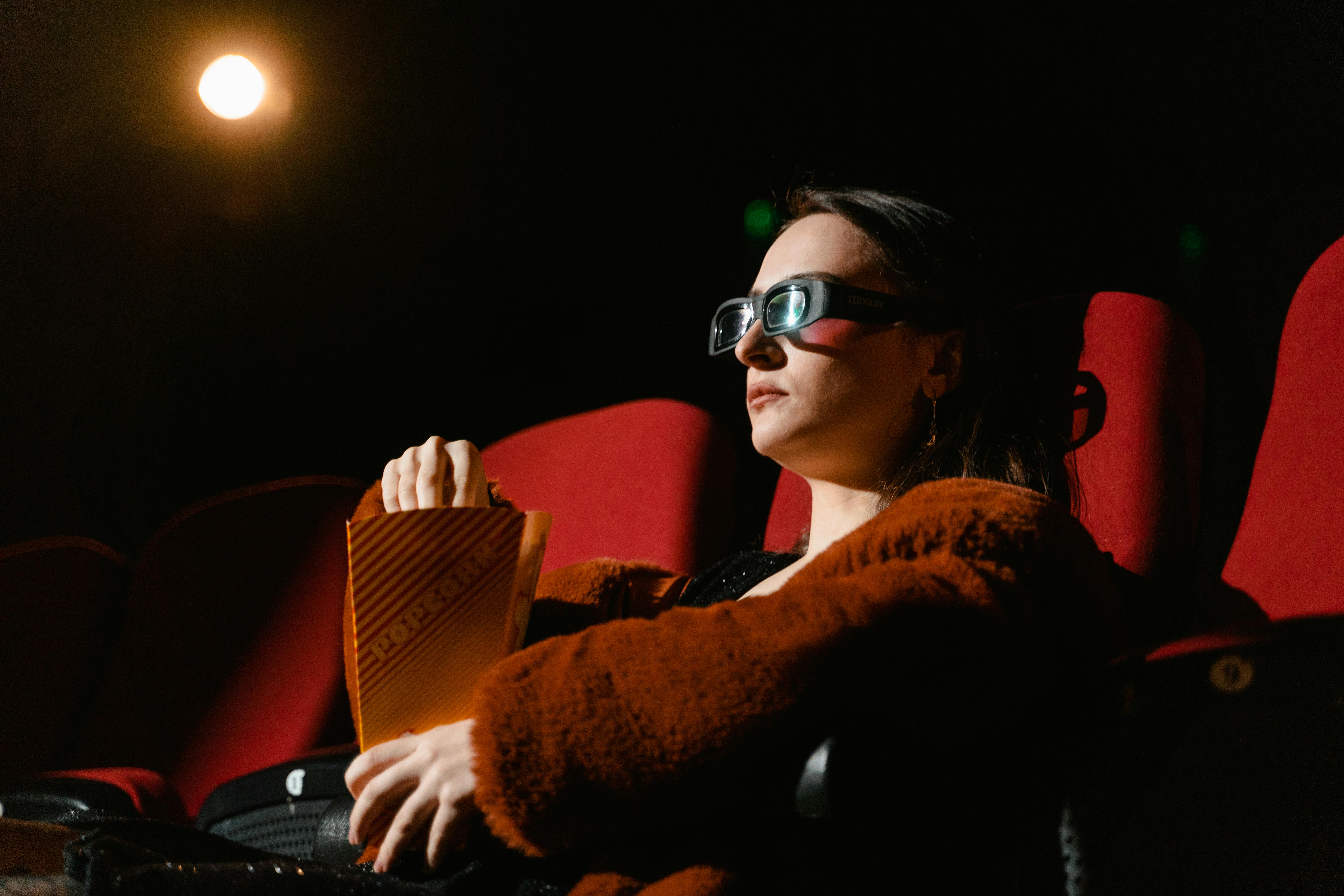
Today, movies fall into several popular categories. Each has its own charm and appeal. They adapt and change with time, yet some genres shine more brightly. Action, comedy, horror, science fiction, and drama hold their places as top picks in recent years. Let's dive into each and see why these categories captivate audiences.
How do current film genre trends reflect in box office revenue?
Action films often dominate the box office. According to Statista, they rake in impressive revenue. Viewers love thrilling fights and fast chases. The genre keeps hearts racing and eyes glued to the screen. Action films like "Die Hard" prove that explosions and heroics capture both our imaginations and our wallets.
Comedy consistently tickles our funny bones. It performs well because laughter never goes out of style. Films like "Airplane!" are crafted to fit quick wits and visual gags. This approach captivates viewers, ensuring they get their money’s worth.
Horror taps into our fears, offering a thrill that's hard to match. This genre commands a steady box office presence. "Halloween" stands as a pillar with its suspense and spooky atmosphere. It shows that addressing our deepest fears remains a box office draw.
Science fiction regularly stirs up excitement. It explores grand ideas and mesmerizes with its imagery. Movies like "Blade Runner" offer both mind-blowing visuals and philosophical themes. These elements contribute to solid box office returns.
Drama, timeless and compelling, earns strong audience support. Films like "The Shawshank Redemption" reach viewers on an emotional level. Thought-provoking stories and strong characters ensure it holds steady box office success.
What are the top film genres by era?
When we think of past decades, certain genres come to mind. They leave strong imprints and set the stage for new stories. Let's explore the evolution of film genres over different eras to see which captivated audiences the most.
In the 1980s, action films surged. The decade brimmed with muscle-bound heroes and epic battles. "Die Hard" rose to fame with its thrilling sequences and colorful characters.
The 1990s saw comedies like "Airplane!" develop unique humor that appealed wide. The film’s sharp wit and timing made it a classic that influenced later comedies.
Horror spanned decades but truly captivated in the late 1970s and 1980s. "Halloween" emerged, setting enduring standards. Suspense and chilling soundtracks kept viewers engaged and scared.
During the 1980s, science fiction opened up vibrant visions of the future. "Blade Runner" became a landmark due to its imaginative world-building and complex narratives.
Drama's impact spanned the 1990s and beyond. The stakes and themes in films like "The Shawshank Redemption" rooted deeply into the hearts of audiences. The genre endures due to its exploration of the human experience.
Which cinematic categories are performing globally in 2023?
In 2023, the film landscape embraces globalization. Movies reach vast, diverse audiences worldwide. Let's look at which genres stand out in this global arena.
Globally, action films continue to top the charts. Cultures everywhere appreciate exhilarating spectacle. The genre's universal appeal keeps it thriving across continents.
Comedy bridges cultures, inviting laughter in any language. Global audiences embrace humor as a shared joy. Well-crafted comedies transcend barriers, tickling imaginations globally.
Horror, with its many forms and folklore, connects cultures through shared fears. From supernatural chills to psychological horror, this genre maintains a strong presence.
Science fiction speaks to the dreamers and thinkers. It envisions what could be and challenges how we see our world. Global audiences find these futures reflective yet inspiring.
Drama dives into universal stories of love, hope, and challenge. It resonates with the human heart across the world. This genre reflects our shared truths and experiences.
Each genre holds a particular allure and continues to develop. They evolve by drawing inspiration from diverse global narratives. As they captivate audiences everywhere, they influence and shape the future of film.
How have film genres evolved over the decades?
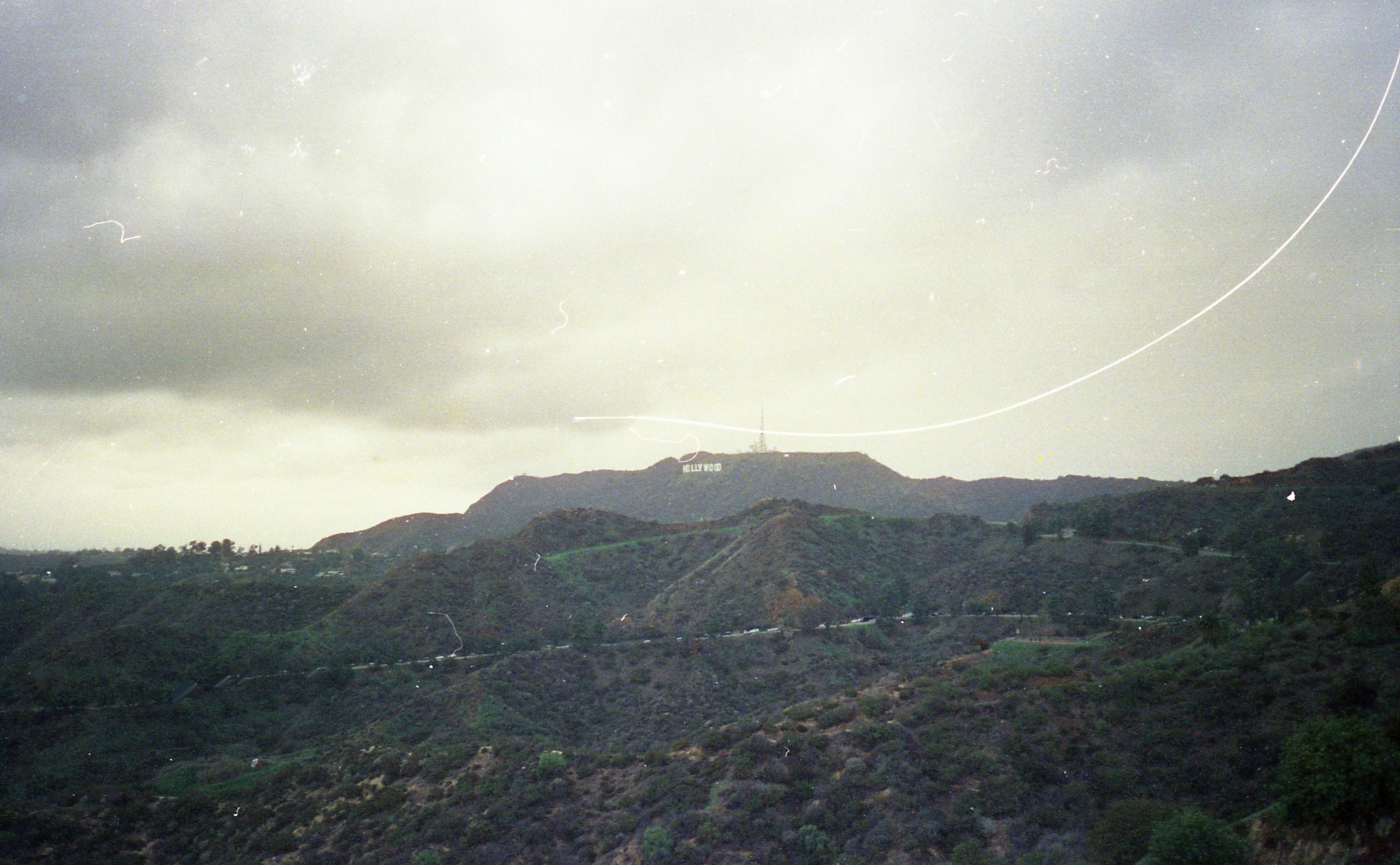
Film genres have changed a lot over time. The evolution of film genres through decades is a story of art meeting society. Each decade brings new stories and styles. This keeps films fresh and appealing. The road from silent films to modern blockbusters is full of twists and turns.
What are the key characteristics of film genres by decade?
Each decade has a film genre that shines. Let's start with the 1930s. Drama films set the stage during this time. Think of "Gone with the Wind," a classic that showed the grandiosity of love and loss. The 1940s saw the rise of film noir, a style known for its mystery and dark themes.
As we reached the 1950s, musicals captured hearts. Bright sets and catchy tunes became popular, with "Singin' in the Rain" standing as a hallmark of this era. The 1960s marked the start of spy films and Westerns. You might remember "Goldfinger" or "The Magnificent Seven."
The 1970s brought grit and realism. Crime dramas were king, with movies like "The Godfather" showcasing powerful family sagas. Come the 1980s, action films exploded onto the scene. "Die Hard" exemplified intense action scenes and thrilling narratives.
Moving into the 1990s, romantic comedies ruled, offering laughter mixed with love tales. Meanwhile, the new millennium, the 2000s, presented fantasy and epic adventures. "The Lord of the Rings" series serves as a prime example.
Science fiction and superhero films became the major players in the 2010s. Films like "The Avengers" highlight complex plots and dazzling effects. These key characteristics not only define decades but also pave the way for future cinema trends.
How have historical film trends shaped modern cinema?
Film history is a blueprint for today's cinema. The patterns of past decades shape what we enjoy now. Action films learned from their 1980s ancestors. The fast pacing and stunts are more intense today, yet they carry the same core excitement.
In drama, storytelling strides toward exploring deeper narratives. Films from the 1970s provided bold stories. These created a stronger focus in today’s drama, like deeper emotional plots and enriched characters.
Moreover, horror has evolved by learning from classics like "Halloween." The tension and suspense of these films are replicated today. However, modern horror uses technology for eerie sound effects and visuals.
Science fiction has always pushed the boundaries of storytelling. "Blade Runner," with its visionary worlds, laid the groundwork. Now, today's sci-fi films build even more elaborate universes. They use CGI to bring impossible worlds to life.
All these historical film trends have given modern cinema a solid foundation. Filmmakers now blend styles, bringing fresh innovation to the industry. We see this in how genres mix, creating something new from what came before.
What role does societal change play in movie's genre evolution?
Movies mirror society. As people and society evolve, films change too. Social changes shift what stories are told and how they are shown. Film genres adapt to reflect the times.
For instance, the 1970s saw a rise in films exploring social issues. Political and societal unease found representation in crime and drama films. This mirrored the concerns of that era. Fast forward to today, films tackle subjects like climate change and technology.
During the 1980s, societal focus shifted to individual achievements. Action films championed heroes. They became larger-than-life figures fighting against all odds. The themes cater to dreams of personal triumph and perseverance.
Romantic comedies show how views on love change. The '90s brought more nuanced representations of love stories. Non-traditional relationships started gaining acceptance, reflecting shifting societal norms.
The representation of gender and race in films reflects ongoing societal dialogues. There's a move towards diversity and inclusion. Films now try to include broader perspectives. They strive to capture the voices of various communities.
In recent years, societal concerns about mental health influence dramas. Audiences find more films addressing these themes directly. This mirrors growing awareness about these issues in society.
Societal shifts play a massive role in evolving what we see on screen. They impact which stories filmmakers choose to tell and how they tell them. This symbiotic relationship between film and society continues to shape cinema’s future.
These changes in film genres are like a mirror. They show us what past filmmakers valued and what today's directors think is important now. As the world keeps changing, so too will the genres of our films. This is what keeps cinema exciting for each new generation of viewers.
What defines the characteristics of popular movie genres?

When we watch a movie, we often find common themes. These themes show up as repeated elements, tones, and styles. These are the defining characteristics that shape film genres. Understanding them helps us see why we love certain types of movies. Each genre has unique traits that make us recognize what kind of movie we are watching. For instance, action movies keep us excited with fast-paced scenes and thrilling stunts. In contrast, dramas tug at our hearts with strong stories and emotional characters.
What are the defining characteristics that shape film genres?
Defining characteristics are what make each genre special. For action films, it is the adrenaline rush from car chases, explosions, and fights. Imagine the thrills from watching "Die Hard." It is not just about the action scenes but the tension and excitement that keep us glued to our seats. In the world of comedy, humor takes center stage. Comedies, like "Airplane!," make us laugh with clever jokes, timing, and visual humor. The ability to find humor in situations is what makes comedies a favorite for many.
Horror films work by stirring fear and suspense. Movies like "Halloween" show this with eerie settings and heart-pounding moments. The empty streets and lurking shadows add to the spooky feeling. Horror movies do not just shock us; they create a sense of dread that sticks with us long after the movie ends.
Science fiction, or sci-fi, explores future worlds and possibilities. "Blade Runner" is a shining example. It blends high-tech visuals with deep themes, making us think about what is possible. Sci-fi movies take us to distant planets or into the future, making us rethink our place in the universe. This genre mixes science with imagination, leading to new ways of storytelling.
Drama focuses on character development and deep themes. "The Shawshank Redemption" stands out with its story of hope and friendship. These movies make us feel connected to the characters, exploring complex human emotions. Dramas make us reflect on real life and often leave a lasting impression.
How do genre characteristics vary among popular films?
Each film within a genre can bring something new. Even if two action films focus on car chases, they might feel different. Take "Die Hard" and "Mad Max: Fury Road." Both are action-packed, but "Die Hard" is set in a building, while "Mad Max" unfolds in a wasteland. This difference in setting creates a different mood.
In comedy, the style of humor can change. Some rely on slapstick, with physical comedy, while others use smart dialogue. "Airplane!" is different from "Groundhog Day," yet both bring laughter. This shows how comedy can vary, based on how humor is delivered.
Horror films also range in style. Some might play on psychological horror, while others focus on grotesque monsters. "Halloween" is about suspense, where the fear comes from what you cannot see. In contrast, "A Nightmare on Elm Street" plays with dreams and fantasy to scare its audience. The source of fear in horror can make a huge difference in how it impacts us.
Sci-fi films often mix elements like space travel or robotics with human struggles. In "Blade Runner," the focus is on human-like robots and what it means to be human. Meanwhile, "Star Wars" brings epic battles and journeys through galaxies. Although both are sci-fi, they take different approaches to exploring new worlds.
Dramas might also vary, some focusing on legal battles, while others might focus on personal growth. "The Shawshank Redemption" centers around friendship, while "A Few Good Men" is about justice. The themes in dramas can range widely, reflecting different aspects of our lives.
What are some well-known examples of key genre characteristics?
Some movies clearly show genre characteristics. In action, "Die Hard" shows fast-paced action, highlighting Bruce Willis's memorable role as a hero. This movie set a standard for action thrillers. For comedy, "Airplane!" remains a perfect example with its nonstop gags and clever writing.
"Halloween" is an iconic horror film, showcasing what suspense and fear can do. Michael Myers, the masked character, became a symbol of horror with his silent yet terrifying presence. In science fiction, "Blade Runner" stands out for its mix of technology and human emotion. It explores deep questions about identity and future life.
Dramas like "The Shawshank Redemption" are admired for their storytelling and emotional depth. This movie connects with audiences through its themes of hope and friendship. It has become a favorite for its rich characters and plot.
Each genre leaves its mark with specific traits. These traits bring life to stories and allow us to experience new adventures, laughter, or tears. Understanding these characteristics helps us appreciate movies as more than just entertainment. They are a window into different worlds created through a blend of art, storytelling, and culture.
Which film genres are currently dominating in North America?
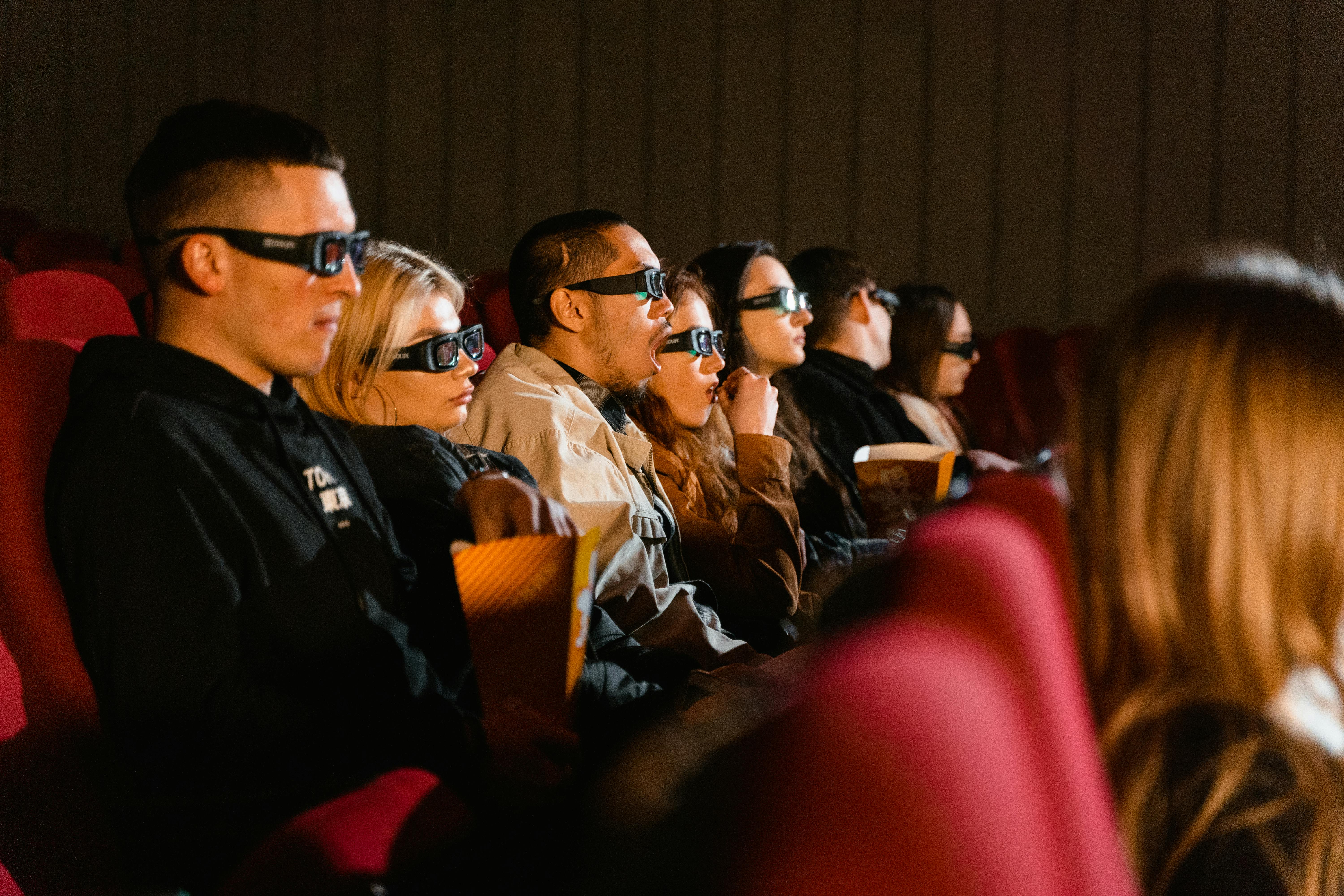
When we talk about popular films in North America, certain genres often come to mind. They are the ones pulling in big crowds and soaring at the box office. These genres shift and evolve with time, influenced by audience tastes and cultural trends. Are you curious about the dominant film genres in America today? Let's dive right in to find out which ones are leading by box office success, and what that tells us about viewer likes and upcoming trends.
What are the most popular film genres in America by box office performance?
Movies earn fame at the box office by connecting with fans on multiple levels. Recently, action films have been major players on the American stage. Films like "Die Hard" show why people love this genre. The mix of intense sequences and striking stunts makes viewers eager for more. Audiences can’t get enough of the tension and suspense action films deliver.
Another beloved genre is comedy. A classic like "Airplane!" draws smiles all around with its funny lines and clever scenes. People look for films that take them away from their daily lives, if only for a bit. Comedies succeed because they offer a break from stress and promise lots of fun.
Horror movies also lead in the box office race. Fans of this genre love the thrill and the chill that these films bring. An iconic title, "Halloween," set a high bar with its spooky mood and thrilling story. Films in this genre keep people on edge, with unexpected twists and spine-tingling plots.
Science fiction has also gained a loyal fan base. "Blade Runner" sets the pace with its unique vision and exploration of future worlds. Sci-fi fans dive into these realms where creativity has no bounds. These films allow the mind to wander and imagine the impossible.
Finally, dramas touch viewers deeply with stories of hope, challenge, and courage. "The Shawshank Redemption" shows the human spirit's strength and resolve, making it a staple in the drama genre. Dramatic films touch on universal themes, prompting viewers to reflect on their own lives and dreams.
If you want to see just how much these films make, check out the box office earnings here.
How do U.S. audience preferences influence genre success?
American film fans have a vast pool of choices. What they pick can make or break a genre’s success. So, what do these choices look like? Americans love thrilling tales, explosive scenes, and gripping dramas. These interests mirror the kinds of films they pay to see.
The thrill of the chase in an action movie pulls viewers in by the thousands. Films like "Die Hard" keep fans glued with heart-stopping sequences. They enjoy feeling the highs and lows that the main characters go through.
Comedies win people over because everyone craves laughter. A funny film is a sure hit if it lands its jokes well. "Airplane!" did this by offering both wit and slapstick, which delights audiences of various tastes.
Horror films mess with your mind, and that appeals to thrill-seekers. Movies like "Halloween" keep the audience thrilled and on edge throughout. Moviegoers love to test their limits with scary stories that tease the imagination.
Science fiction continues to hold sway, thanks to its innovative and far-fetched plots. Movies like "Blade Runner" show vistas of worlds yet to come, keeping viewers spellbound. The genre makes people ponder potential futures, something that draws a unique and curious fan base.
Dramas are consistent in their appeal. Stories like "The Shawshank Redemption" strike a chord with viewers because they navigate human emotions so well. These films often introduce touching narratives that linger long after the credits roll.
What emerging genres are gaining traction in America?
Film genres are not fixed. They shift as new trends rise and capture audience interest. We are starting to see fresh entries in the film arena. Among these, superhero movies have taken a strong foothold. Once comics stepped onto the big screen, our love for heroes only soared. With tales of bravery and spectacle, films in this genre rally fans everywhere.
Documentaries have also seen a boost in popularity. Audiences crave real stories and facts, leading to a rise in this genre’s fame. More people are diving into documentaries to gain insights into world events and issues.
Animation crosses age groups, engaging both kids and adults. With vibrant visuals and compelling stories, animated films offer a different viewing experience. Families flock to theaters for the colorful tales and heartfelt lessons these films promise.
Horror-comedy is a new genre making waves. Films in this category blend thrills with laughs. They offer moments of fright but ease the tension with humor, attracting a diverse crowd. This mix of fear and fun has carved a niche that viewers appreciate and enjoy.
In the end, genre popularity reflects what we, the audience, seek. The emerging trends hint at where our tastes are heading, showing just how dynamic, creative, and varied the world of film continues to be.
How do romantic movie categories influence popular media?

Romantic movies have an incredible impact. They mold both audiences and the film industry itself. In what ways do romantic films impact audiences and the industry? They captivate audiences by exploring love and relationships. This goes beyond just a good story; it affects emotions, setting the mood and tone for many. Seeing characters fall in love or deal with heartbreak allows viewers to feel deeply connected. It offers them an escape, a glimpse into the possibilities of love. The portrayal of love stories also shapes societal norms. It influences how people see love in their own lives.
The power of romantic films extends well beyond the screen. For instance, romantic comedies can draw millions to theaters. This popularity impacts the industry's economics by bringing in significant profits. Studios often invest heavily in these movies, knowing their potential to bring in a large audience. Romantic films can define an actor's career or create iconic moments that last over generations. They often blend with other genres, catering to varied tastes. Directors often incorporate elements that speak universally, ensuring a broader appeal.
What are some key romantic movie trends in recent years? Romantic films have certainly evolved. One major trend is the blending of genres. We are seeing a rise in romantic comedies infused with drama or adventure. Films now often address contemporary issues, offering more depth. In addition, plots no longer follow the same old formula. Modern romantic films often focus on diverse love stories. This includes showcasing different cultures and aspects of love. This change reflects society's growing awareness and acceptance of varied narratives.
Social media also plays a role. It shapes trends within romantic movies. Film discussions on platforms like Twitter can make or break a movie. These discussions influence audience interests and can propel a movie to success. The way romantic films are marketed has changed too. Trailers and sneak peeks are widely shared online. This creates buzz long before a film's release.
Another trend is the setting. Many recent romantic films focus on unique locations. These settings create a fantastical escape for viewers. Beautiful backdrops enhance romance, taking audiences to breathtaking places they've never seen before. The use of stunning locations adds extra appeal to romantic films, making them more alluring.
How are romantic elements incorporated into other genres? Romantic elements enrich many films beyond the romance genre. For example, action films often feature a romantic subplot. This creates an extra layer of emotional depth. It allows the audience to connect with characters on a personal level. Adventure movies use romantic elements to add stakes. They boost characters' motivations and create tension.
In horror films, romance can heighten suspense. A couple facing peril can amplify feelings of dread. The emotional connection keeps viewers invested. Science fiction films often include romantic elements to explore human themes. They delve into love in futuristic or alien settings, providing a unique take on romance.
Romantic elements also find their way into dramas. They explore complex relationships and conflicts. This added focus on romance enriches stories and deepens character development. Even comedies use romance to craft intricate tales of love that resonate with humor. The romantic genre's influence spans far, leaving its mark on countless movies across diverse categories.
As you can see, romantic movie categories exert a strong influence on popular media. They transform how audiences perceive love and relationships. They affect film industry profits, trends, and marketing strategies. They even weave romance into various genres. This makes romantic elements integral to storytelling. With films continuously evolving, there's no doubt the romance genre will keep captivating audiences worldwide. Romantic comedies show the power of love, laughter, and connection. Many still draw inspiration from these films, revealing the timeless nature of romance.
What are the rising trends in global film genres?
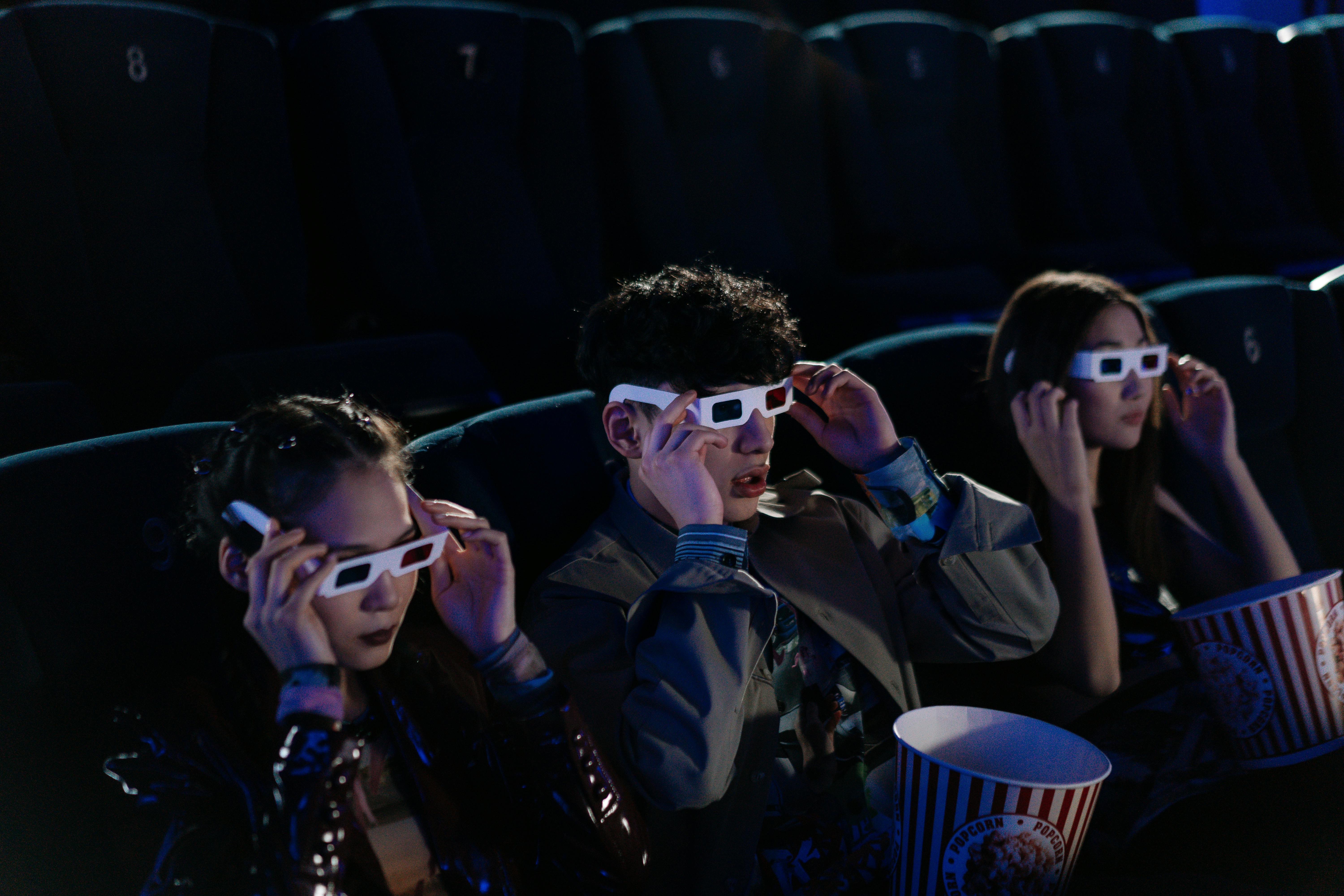
As an avid movie lover, I've noticed an exciting shift in the way global film genres are heading. The blend of cultures, themes, and new ideas has given birth to diverse, fresh genres. Let's dive deep into these emerging trends and see what they might mean for cinema lovers like us.
Which new genres are expected to rise in popularity by 2024?
Modern cinema is poised to see exciting new genres emerge by 2024. One of the most anticipated trends is eco-thrillers, which weave together environmental issues with gripping narratives. Many filmmakers are eager to focus on climate change stories. This genre could reach an audience that's more environmentally aware than ever.
Another upcoming genre is interactive storytelling, which gives viewers a say in plot progression. Think of it like video games blending with film, where choices matter. This genre draws on technology to make movie watching a more immersive experience. It's transforming how we engage with stories on screen.
Then there's the rise of socially conscious sci-fi. Sci-fi has always explored the unknown, but more creators are using it to address current societal issues. Films are expected to explore themes like inequality, privacy, and technology's impact on our lives. This genre is bound to offer both entertainment and food for thought.
Comedy is also evolving. Expect more satirical comedies taking on real-world events and trends. This genre will reflect our current reality in a way that's both funny and insightful.
These genres are a few among many that experts predict will see significant growth. They show how creative filmmakers are pushing boundaries. They prove cinema's power to adapt and reflect societal concerns.
How do cultural differences impact global film genre trends?
Cultural differences have a massive impact on which genres gain popularity globally. What resonates with audiences in one country might not work in another. Let's explore how cultural influences shape these trends.
Take Asian cinema, for example. In many Asian countries, family-centric stories tend to resonate. These narratives often tackle themes like generational ties or cultural obligations. In contrast, Western audiences may prioritize personal freedom and individuality.
Bollywood films are another great example. They embrace music and dance in storytelling. While Western movies may separate singing and dialogue, Bollywood combines them. This cultural difference changes how genres like romance or drama play out on screen.
Hollywood is a major player in the global cinema scene, influencing trends worldwide. Its focus on big-budget blockbusters sets the standard in many countries. However, regional films often blend Hollywood influences with local traditions, creating unique genre fusions.
Social values, language, and tradition all influence what people want to see in films. They shape the storylines and genres that become blockbusters every year. Filmmakers tune into these preferences to craft films that engage audiences deeply.
The art of cinema thrives on diversity, and cultural differences keep pushing the industry forward. This dynamic is crucial for cinema's continuous evolution and transformation worldwide.
What cross-genre innovations are shaping international cinema?
The fusion of different genres is an exciting change in international cinema. This cross-genre trend is not just mixing elements; it's creating entirely new storytelling experiences.
One example is the blend of horror and comedy. Think of films that make you laugh and scream at the same time. This mix offers a unique ride by providing the thrills of horror with laughter’s instant relief.
Then there's the marriage of romance and science fiction. These films bring emotional depth to sci-fi narratives, blending heartwarming stories with futuristic backdrops. This combination draws in fans of both genres, offering them something special.
Historical drama with fantasy elements is making waves too. These movies twist historical settings with mythological or fantastical aspects. They provide engaging stories while adding layers of interest to the past.
One successful real-life example is Star Wars. It's a perfect blend of science fiction, fantasy, and adventure. This beloved saga showcases how cross-genre storytelling captivates audiences for generations.
The boundaries between genres continue to blur, fostering fresh ideas and storytelling methods. The secret lies in taking best elements from respected genres. This fusion reshapes expectations and keeps film lovers like us on our toes. It promises endless possibilities for future cinema.
Conclusion
Film genres shape and reflect our culture. From historical evolution to modern box office hits, these genres tell a story. Romantic films add emotion across categories, while new global trends emerge and gain ground. Genres continue to change and adapt to our changing world. Cinema isn't just entertainment; it captures our interests and drives new trends. Whether you watch for fun or follow as a finance nerd, film genres offer endless insight into culture's pulse. Keep exploring as future trends unfold before our eyes.

